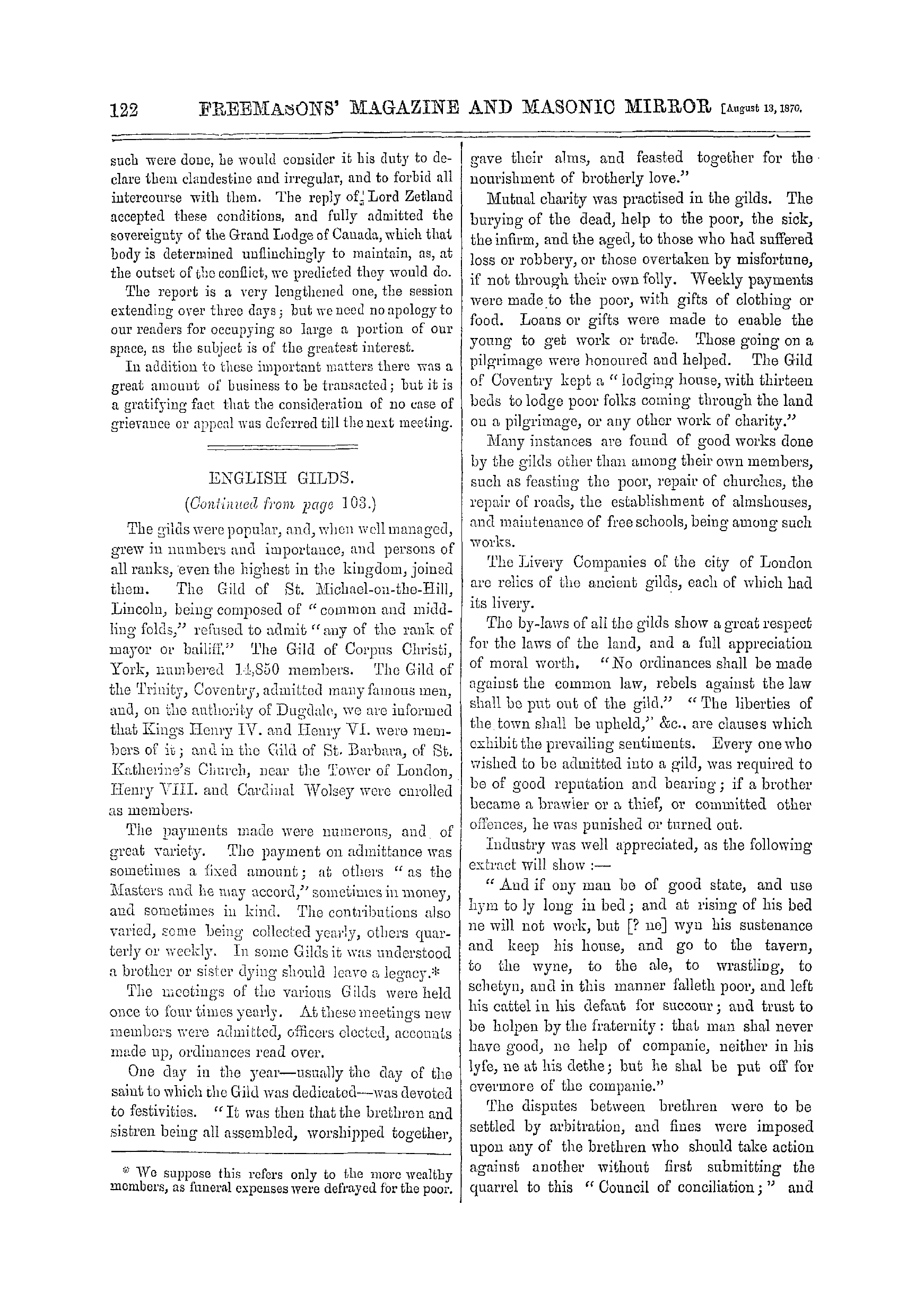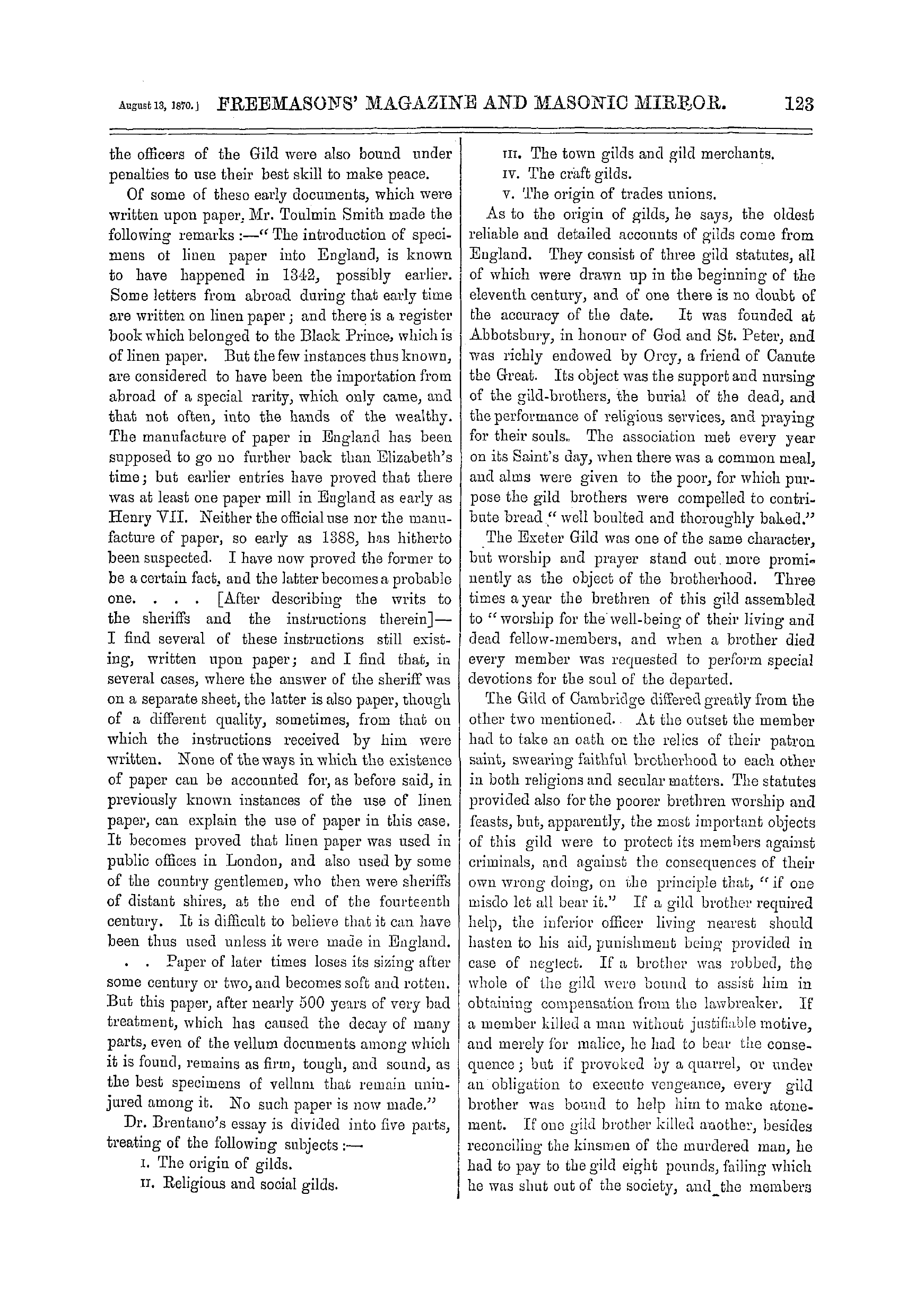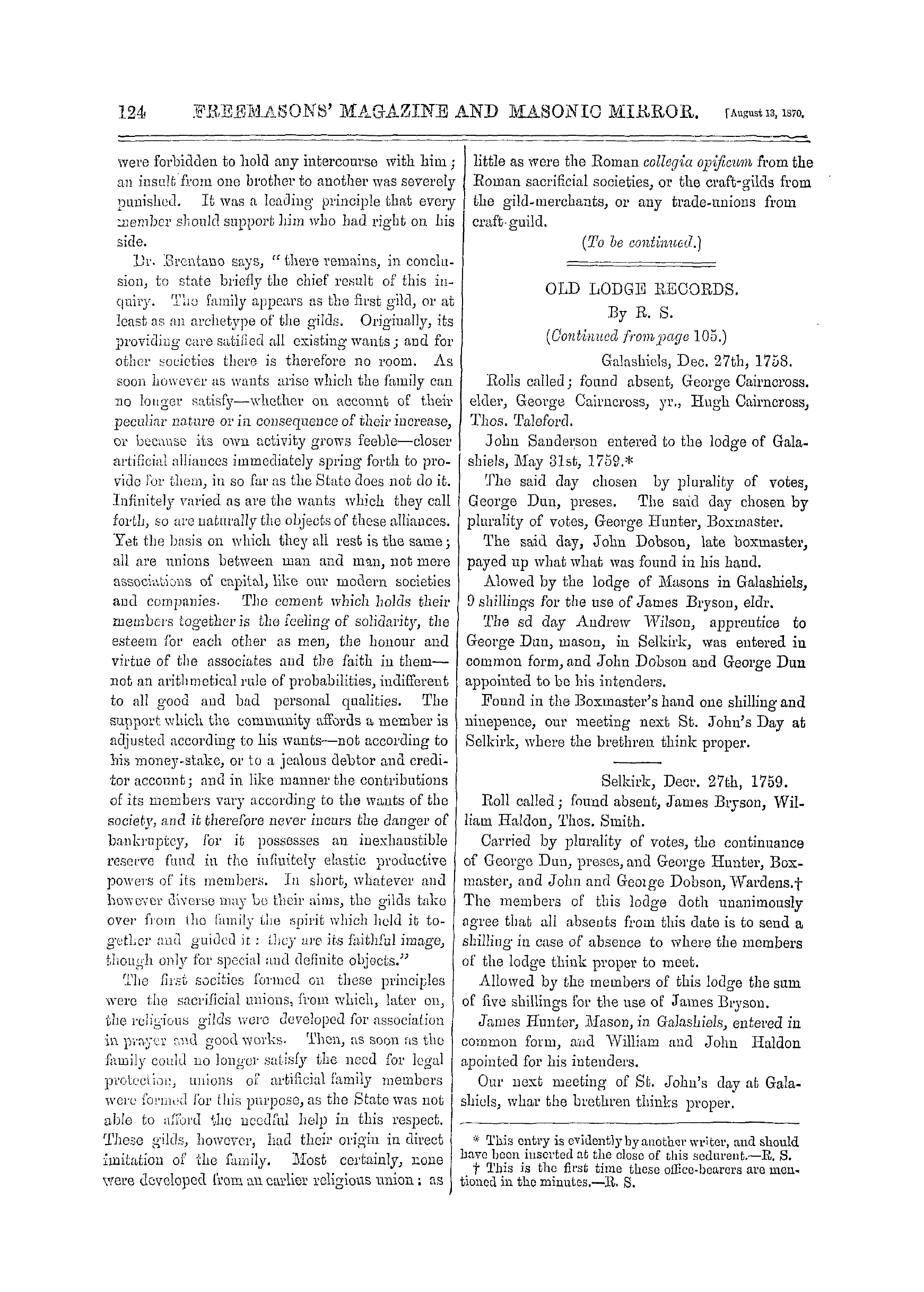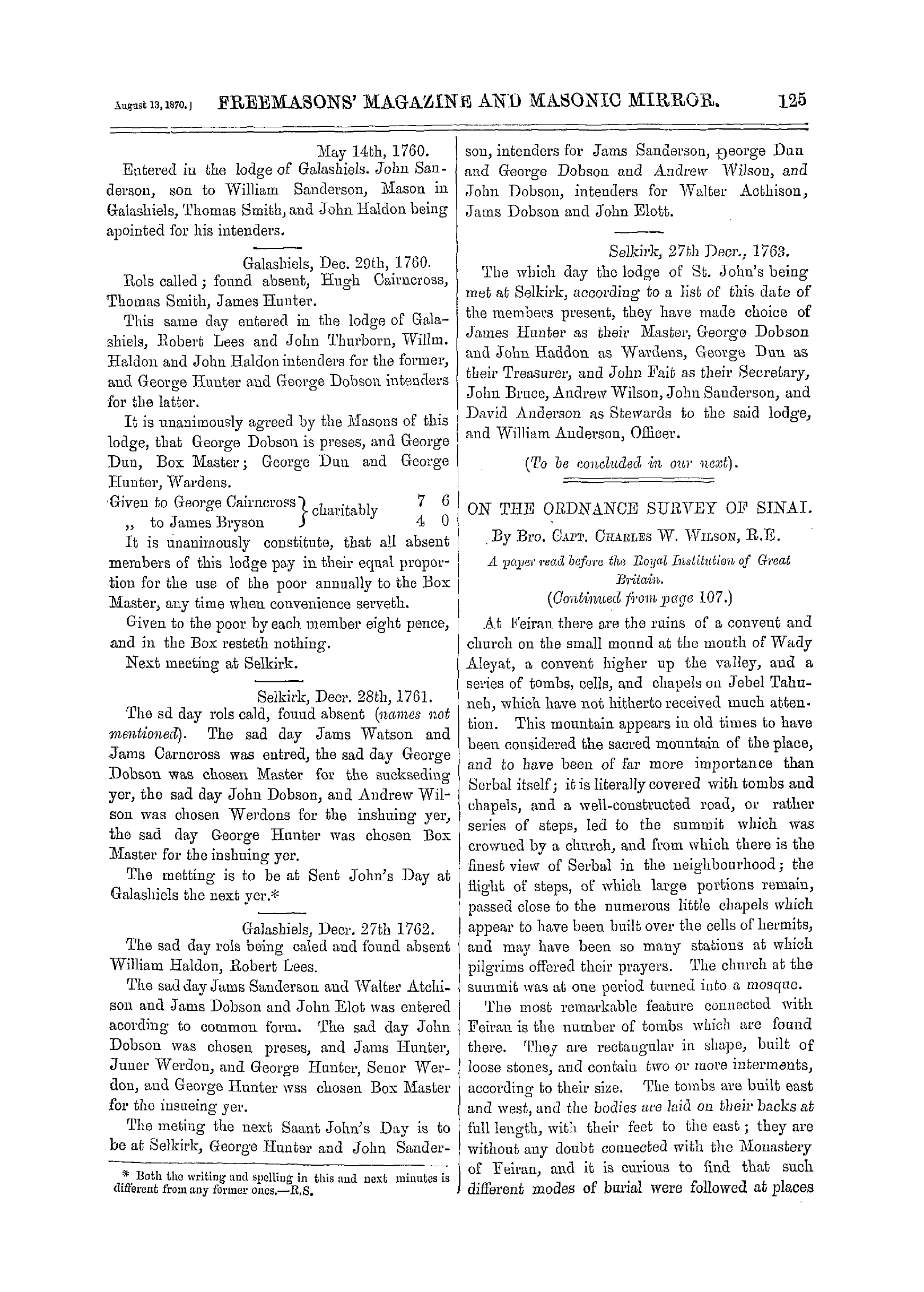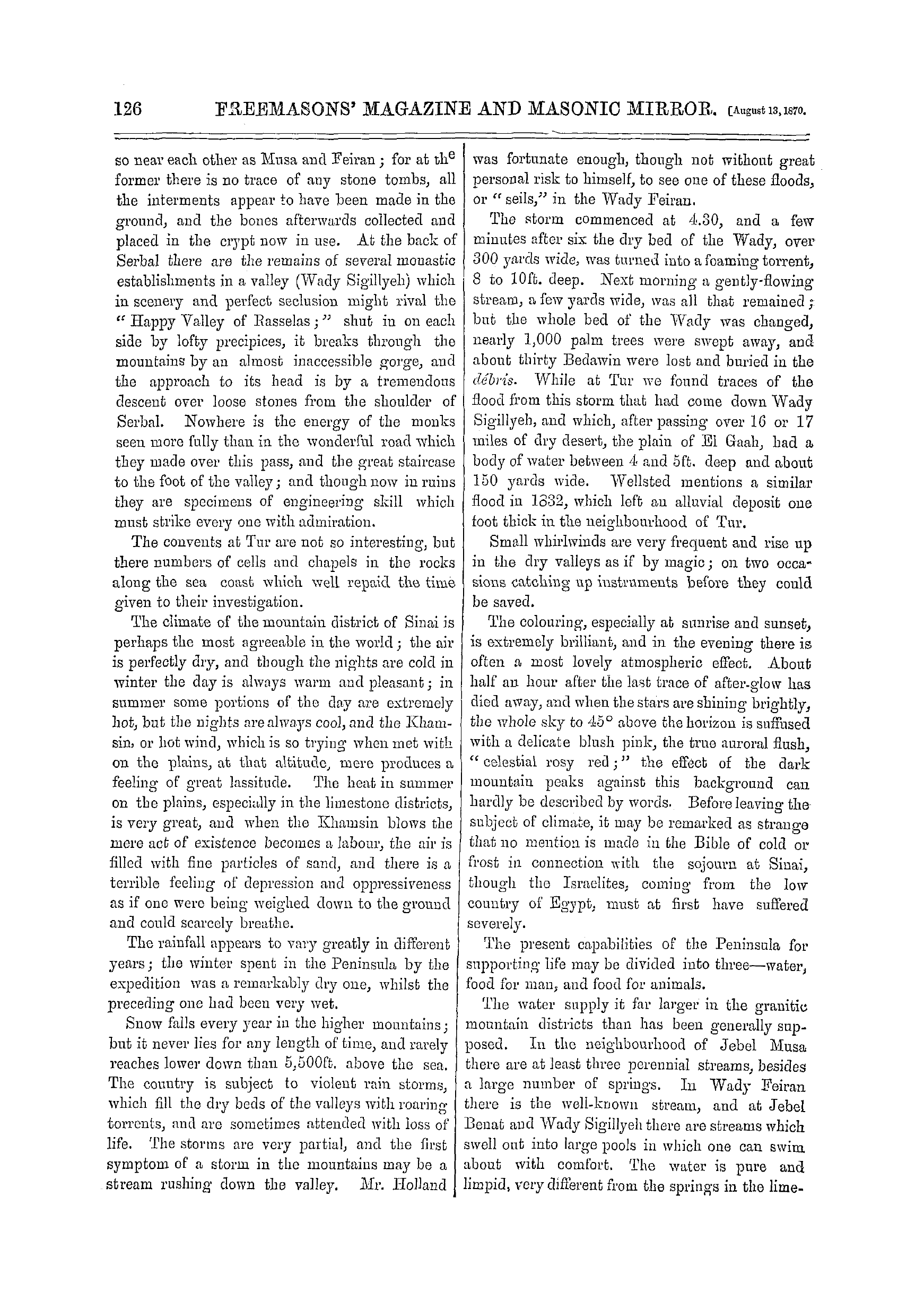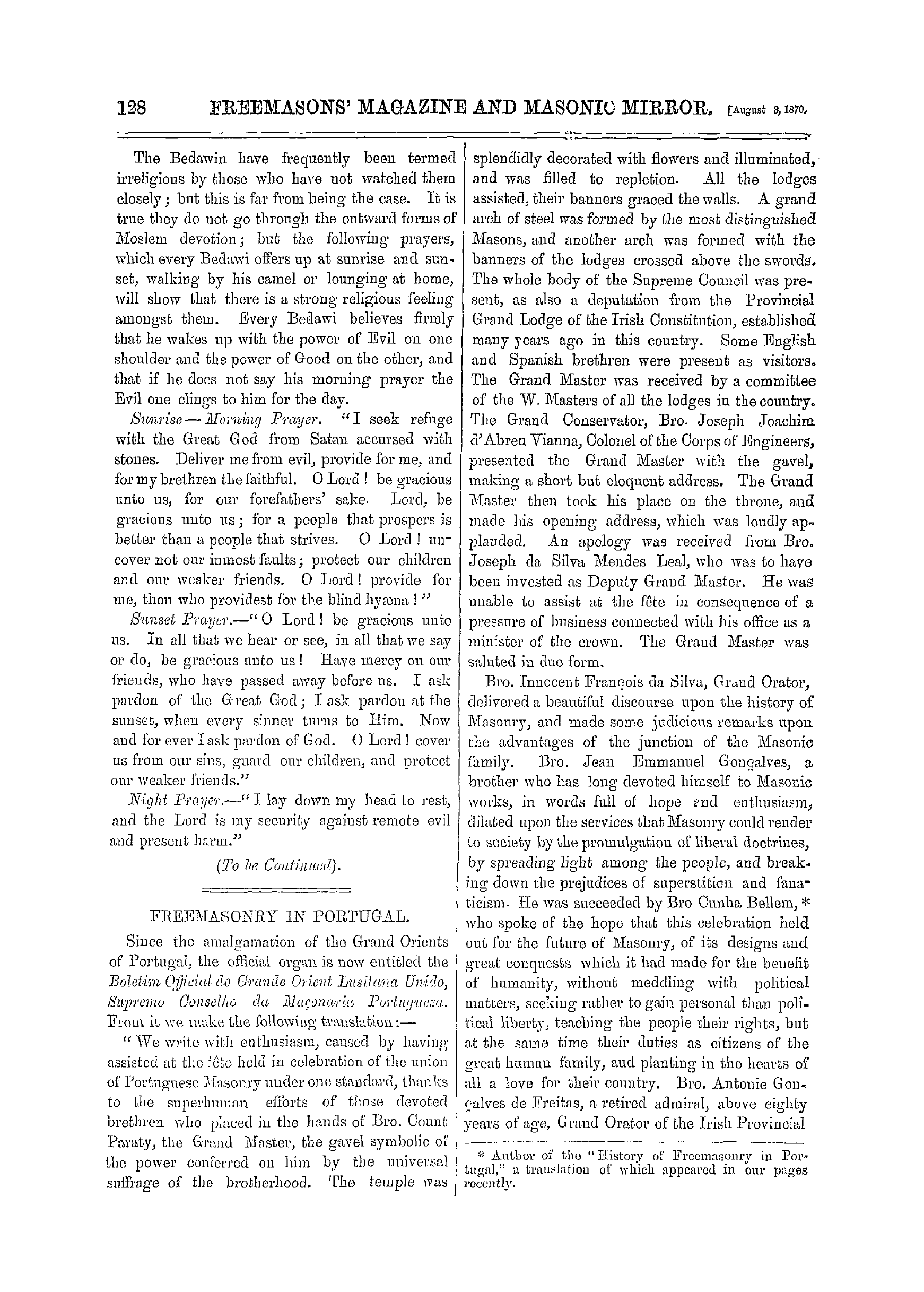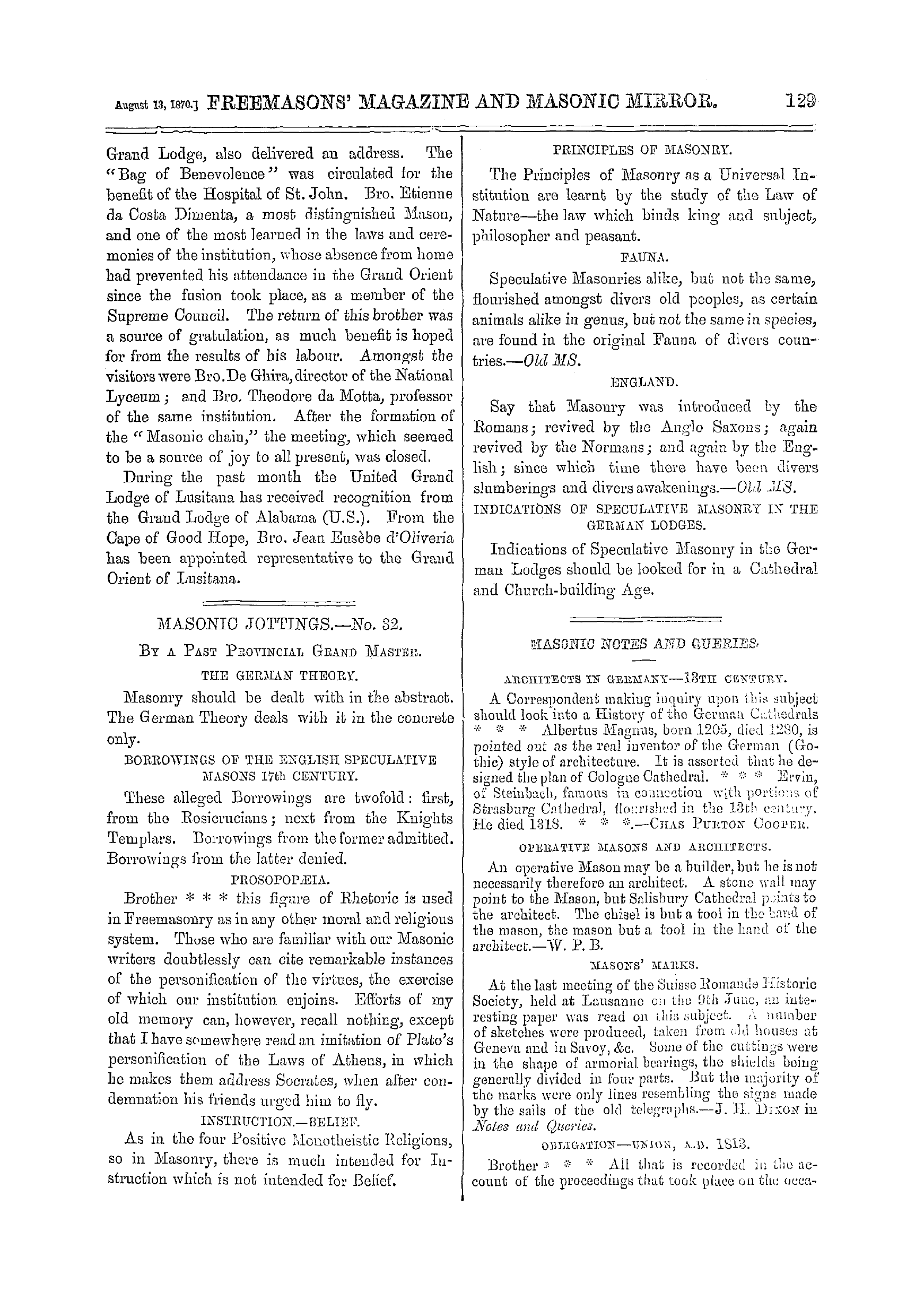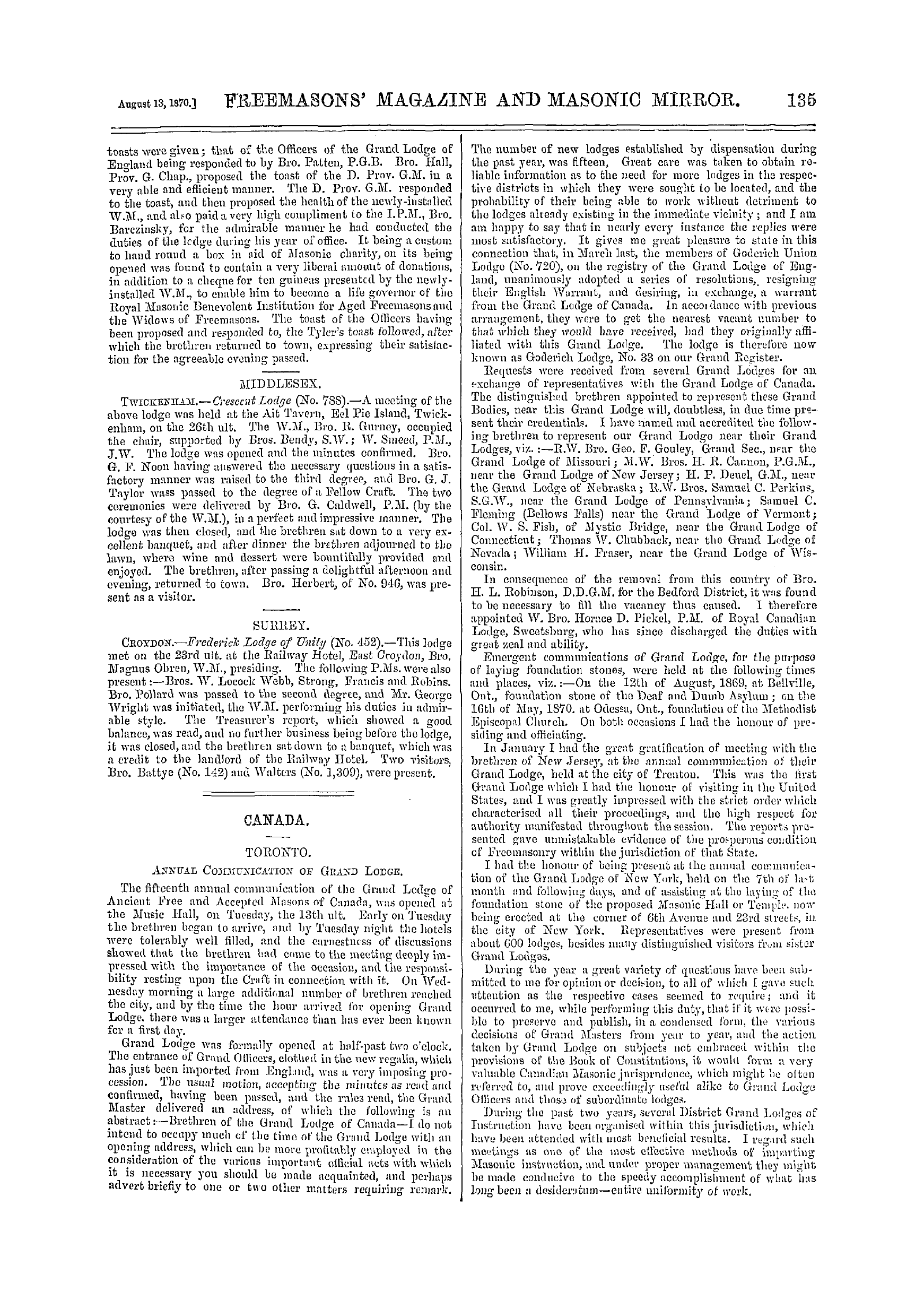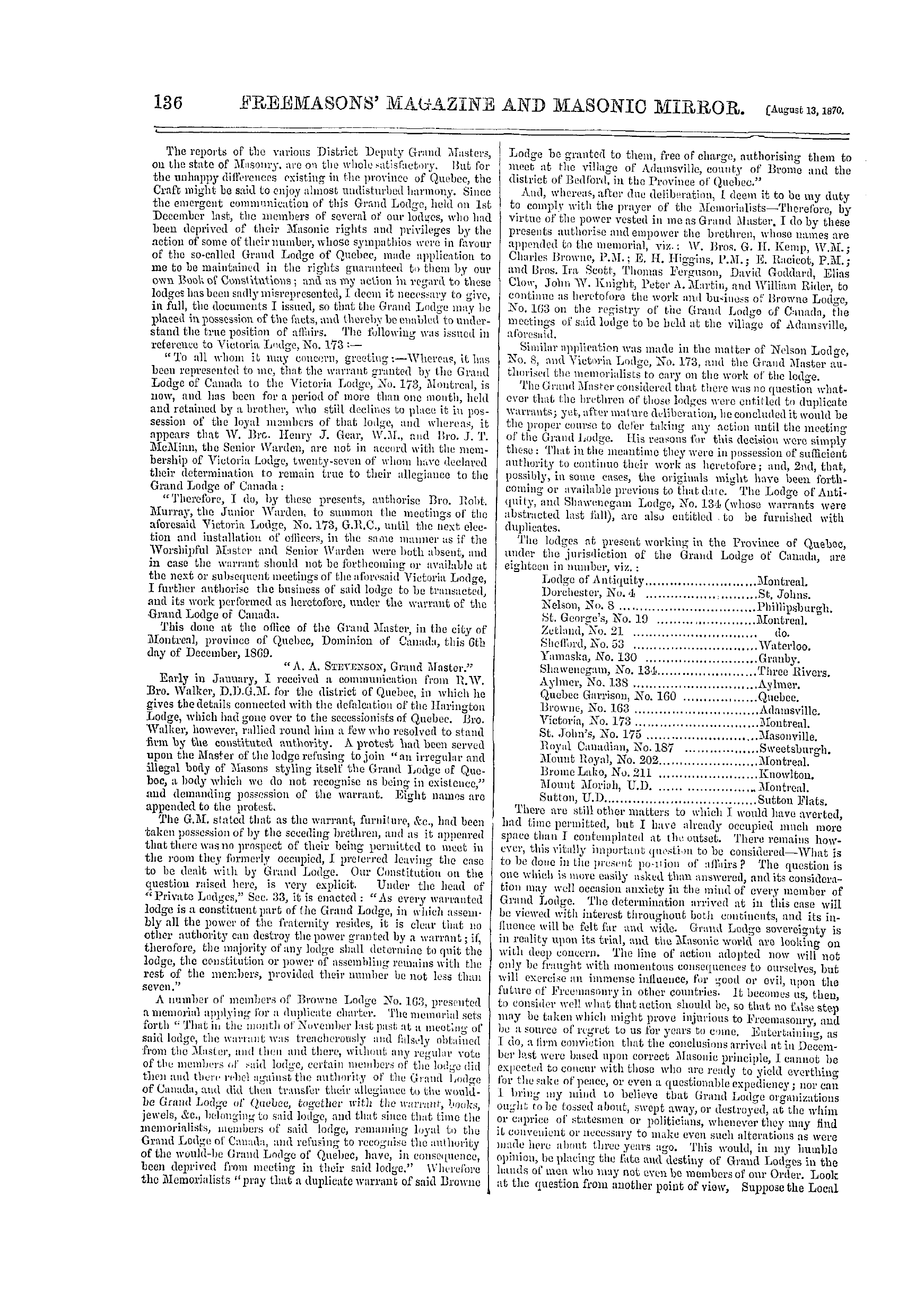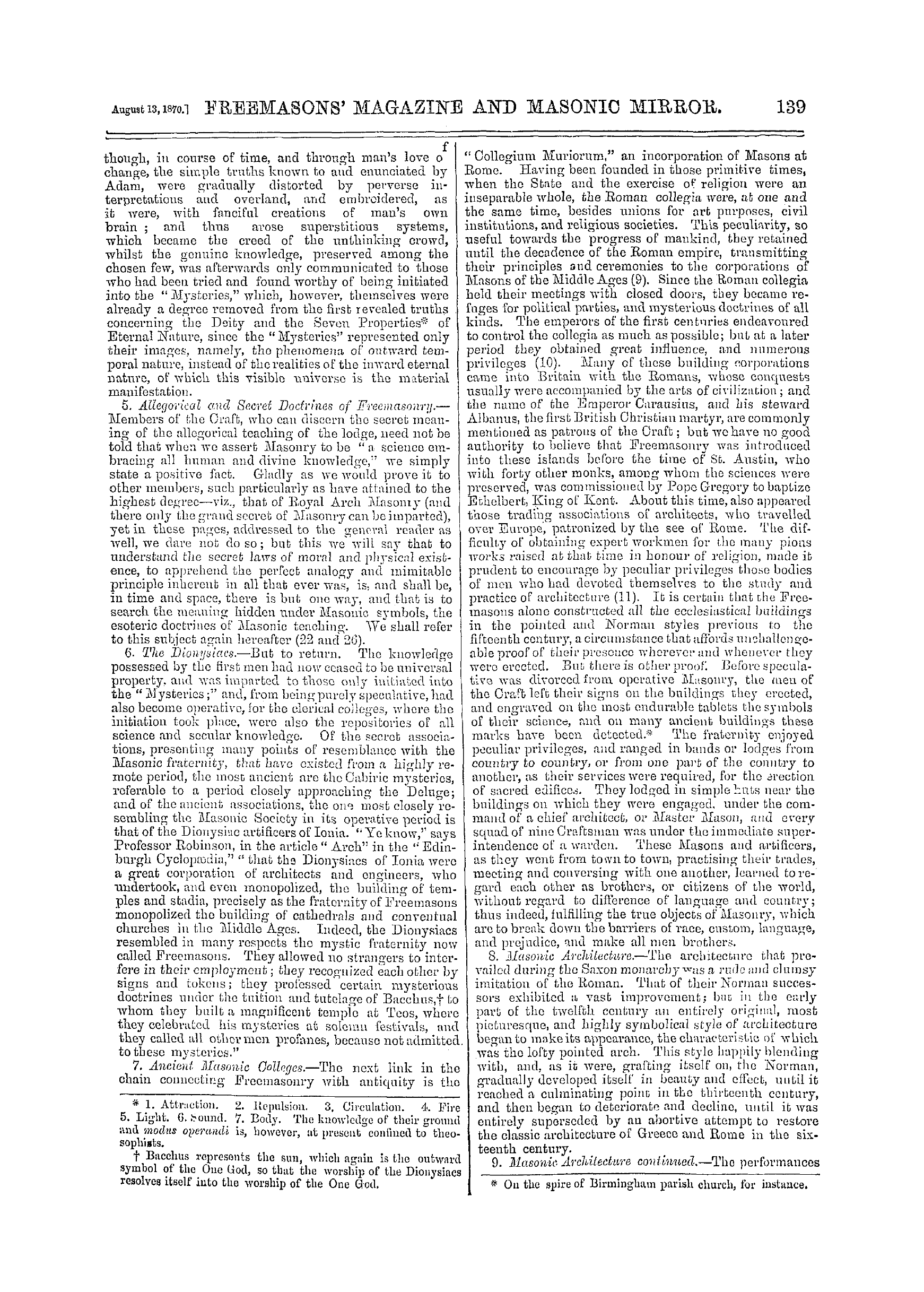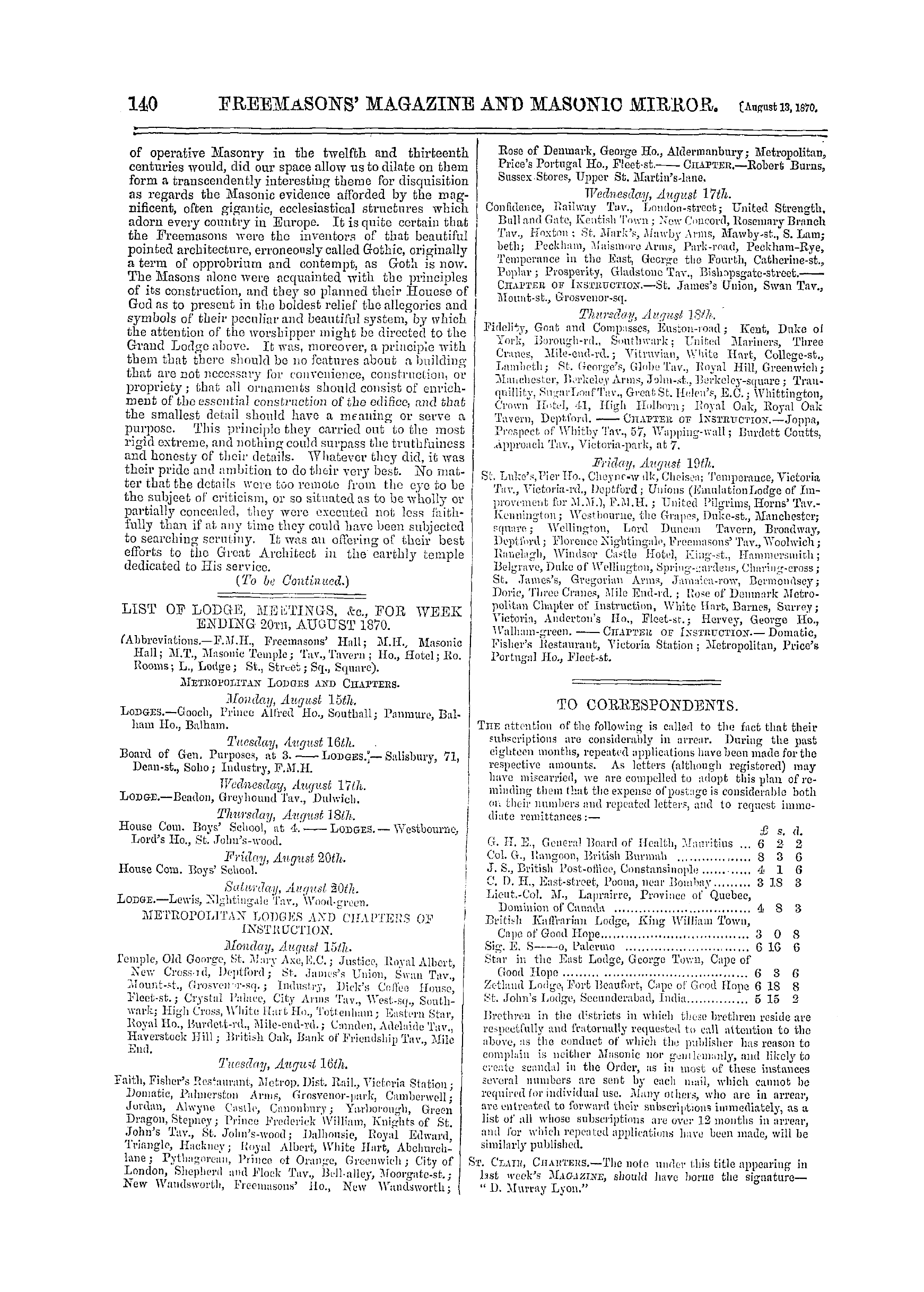-
Articles/Ads
Article ON THE ORDNANCE SURVEY OF SINAI. ← Page 3 of 4 →
Note: This text has been automatically extracted via Optical Character Recognition (OCR) software.
On The Ordnance Survey Of Sinai.
stone districts , Avhich must always have been brackish . There is no difficulty in supposing a fair supply for the children of Israel even if the rainfall were not much greater than at present . In immediate connection with this is the question
Avhether some of the lakes of which Ave have evidence in the alluviums of Wady Peiran , Wady Igne , and other places Avere in existence at the time of the Exodus , strong evidence has been brous'ht to SIIOAV that one at least existed where
the Egyptian mines of Maghara Avere Avorked . There is not time to discuss this ; but I may remark that the Avord " Horeb / ' which means a ** place made dry by the running off of water , " would have a strange significance if Ave supposed
that the Avater of the lakes had run off not very long befoie Moses led the Israelites into the desert . Of food for man there is little ; but the resources might be largely increased , and during early Christian times there is no doubt that a
considerable extent of ground Avas highly cultivated , and even UOAV in the old gardens , Avhich receive no attention , olive , plum , cherry , and other fruit trees flourish in the greatest luxuriance . There are also several large groves of palm trees , and
we have reason to believe that the people who built the stone houses were agricultural , so that the country may have been well cultivated at the time of the Exodus . There is a fair supply of game , including ibex , hare , and four or five species
of partridge ; but of course very insufficient for a large host like that of the Israelites . The tamarisk , or tarfa , from which the manna distils , is generally distributed over the Peninsula , often in dense thickets ; but it is impossible to believe
that this , Avhich is caused by insects during a few months of summer and is really a mild aperient medicine , can have any connection with the manna of the Bible ; besides , the m anna supply continued during their AVhole journey through country where the tamarisk is rarely if ever found .
The food for goats , sheep , and oxen is now scant except after rain , Avhen grass shoots up very rapidly and in comparative abundance . Whether the supply Avas formerly greater and more constant throughout the year depends on the
rainfall , and this Avas probably greater than at present ; at any rate , if we may judge from the figures of horses on the roods , and the numerous Bedawi legends relating to them , there must have been
within the present era vegetation sufficient for horses to have lived in the Peninsula . Those who have visited Palestine , and knoAv Avhat it was , even as late as the Crusades , can understand how soon a Paradise may become a desert .
It is at first rather disappointing to find that feAV , if any , traces of the ancient Scriptural names remain in the Peninsula , even the name Sinai not being known in the native nomenclature . Still , if nothing has been discovered , Mr . Palmer has
done good service in upsetting several theories Avhich have been based on the apparent similarity of names . This is specially tbe case with Jebal Sona and Jebel Serbal . In the first a trace of the word Sinai is supposed to have been found ,
but it is really the Mount of the Artisan . Serbal has been connected with Baal , and so considered to have been , a sacred mountain , whereas it expresses the manner in which heavy rain ' shirts '
or covers the summit . It is the same with the Bedawi traditions , Avhich have undoubtedly been influenced to a very great extent by monkish legend , so much so that it is not an easy matter to separate those Avhich are of
purely native origin . Some of these latter Avhich Mr . Palmer has succeeded in bringing to light are highly interesting , especially one which , places the rock from Avhich Moses brought water , in Wady Peiran , not far beloAv the position assign ed
by the earliest Christian tradition to Rephidim , and another which would seem to identify some peculiar remains with the camp of Kilbroth Hattaavah .
The Bedawin of Sinai number about 4 , 000 males . They are a quiet inoffensive race , and their poverty is such that their whole life is one long' struggle for existence . The Towara are not the aboriginal inhabitants
of the Peninsula , but settled in it at the time of the Mohammedan Conquest . Their predecessors Avere a branch of the Aramajan race , of whom traces may possibly remain in the Jibaliyeh tribe , as names peculiar to them are found in the
Aramscan ( Sinaitic ) inscriptions . The Jibaliyeh are looked down upon by the other Bedawin as not being of pure descent . They are supposed to owe their origin to the 400 Wallachian and other prisoners sent by Justinian for the service of the
convent , and this is supported by their own tradition , a peculiar cast of countenance , and their names , indicating intermarriage Avith theAramo _ aus .
Note: This text has been automatically extracted via Optical Character Recognition (OCR) software.
On The Ordnance Survey Of Sinai.
stone districts , Avhich must always have been brackish . There is no difficulty in supposing a fair supply for the children of Israel even if the rainfall were not much greater than at present . In immediate connection with this is the question
Avhether some of the lakes of which Ave have evidence in the alluviums of Wady Peiran , Wady Igne , and other places Avere in existence at the time of the Exodus , strong evidence has been brous'ht to SIIOAV that one at least existed where
the Egyptian mines of Maghara Avere Avorked . There is not time to discuss this ; but I may remark that the Avord " Horeb / ' which means a ** place made dry by the running off of water , " would have a strange significance if Ave supposed
that the Avater of the lakes had run off not very long befoie Moses led the Israelites into the desert . Of food for man there is little ; but the resources might be largely increased , and during early Christian times there is no doubt that a
considerable extent of ground Avas highly cultivated , and even UOAV in the old gardens , Avhich receive no attention , olive , plum , cherry , and other fruit trees flourish in the greatest luxuriance . There are also several large groves of palm trees , and
we have reason to believe that the people who built the stone houses were agricultural , so that the country may have been well cultivated at the time of the Exodus . There is a fair supply of game , including ibex , hare , and four or five species
of partridge ; but of course very insufficient for a large host like that of the Israelites . The tamarisk , or tarfa , from which the manna distils , is generally distributed over the Peninsula , often in dense thickets ; but it is impossible to believe
that this , Avhich is caused by insects during a few months of summer and is really a mild aperient medicine , can have any connection with the manna of the Bible ; besides , the m anna supply continued during their AVhole journey through country where the tamarisk is rarely if ever found .
The food for goats , sheep , and oxen is now scant except after rain , Avhen grass shoots up very rapidly and in comparative abundance . Whether the supply Avas formerly greater and more constant throughout the year depends on the
rainfall , and this Avas probably greater than at present ; at any rate , if we may judge from the figures of horses on the roods , and the numerous Bedawi legends relating to them , there must have been
within the present era vegetation sufficient for horses to have lived in the Peninsula . Those who have visited Palestine , and knoAv Avhat it was , even as late as the Crusades , can understand how soon a Paradise may become a desert .
It is at first rather disappointing to find that feAV , if any , traces of the ancient Scriptural names remain in the Peninsula , even the name Sinai not being known in the native nomenclature . Still , if nothing has been discovered , Mr . Palmer has
done good service in upsetting several theories Avhich have been based on the apparent similarity of names . This is specially tbe case with Jebal Sona and Jebel Serbal . In the first a trace of the word Sinai is supposed to have been found ,
but it is really the Mount of the Artisan . Serbal has been connected with Baal , and so considered to have been , a sacred mountain , whereas it expresses the manner in which heavy rain ' shirts '
or covers the summit . It is the same with the Bedawi traditions , Avhich have undoubtedly been influenced to a very great extent by monkish legend , so much so that it is not an easy matter to separate those Avhich are of
purely native origin . Some of these latter Avhich Mr . Palmer has succeeded in bringing to light are highly interesting , especially one which , places the rock from Avhich Moses brought water , in Wady Peiran , not far beloAv the position assign ed
by the earliest Christian tradition to Rephidim , and another which would seem to identify some peculiar remains with the camp of Kilbroth Hattaavah .
The Bedawin of Sinai number about 4 , 000 males . They are a quiet inoffensive race , and their poverty is such that their whole life is one long' struggle for existence . The Towara are not the aboriginal inhabitants
of the Peninsula , but settled in it at the time of the Mohammedan Conquest . Their predecessors Avere a branch of the Aramajan race , of whom traces may possibly remain in the Jibaliyeh tribe , as names peculiar to them are found in the
Aramscan ( Sinaitic ) inscriptions . The Jibaliyeh are looked down upon by the other Bedawin as not being of pure descent . They are supposed to owe their origin to the 400 Wallachian and other prisoners sent by Justinian for the service of the
convent , and this is supported by their own tradition , a peculiar cast of countenance , and their names , indicating intermarriage Avith theAramo _ aus .

